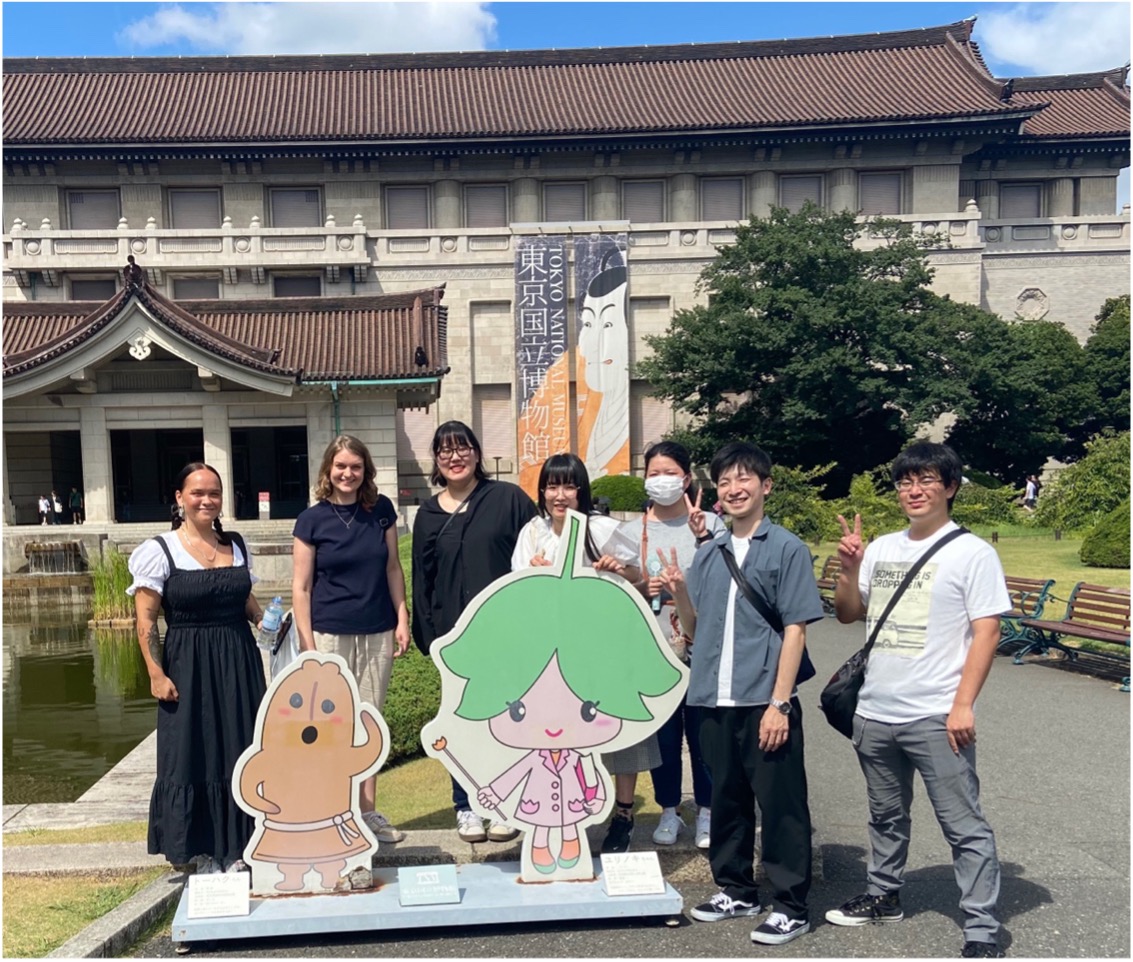 Ally and Savannah with the Tsurumi University Cultural Heritage students outside Tokyo National Museum
Ally and Savannah with the Tsurumi University Cultural Heritage students outside Tokyo National Museum
Third year BA (Hons) Conservation: Stone, Wood & Decorative Surfaces students Ally Wingate-Saul and Savannah Grieve took part in an Urushi Internship over their summer break at Tsurumi University in Yokohama, Japan. The internship provided accommodation in Tsurumi for 21 days and teaching over a two-week period. They were taught under the guidance of Professor Yajima by Takumi Matsumoto, a PhD student in cultural heritage.
The focus of the internship was an introduction to urushi, or Japanese Lacquer, a traditional Japanese craft which has a rich history and has long been a highly prized material. It is versatile and highly durable, thus produced a distinctive art form which is widespread in Japan.
“We were greeted at Haneda Airport by Takumi Matusmoto who kindly took the time to make sure we could safely find the guest house in Tsurumi. To show even further hospitality we were greeted the following morning, outside our accommodation, by students Izumi and Arata, who showed us the route to Tsurumi University.”
Takumi Matsumoto taught the history and harvesting of urushi, traditional maki-e techniques (using gold powder) and mother of pearl decorative techniques. Other teaching was undertaken by students and professors at Tsurumi University who took Ally and Savannah on various guided museum visits to see many treasured lacquered objects. They also joined 3rd year students’ classes to learn traditional Japanese methods of handling and packaging for heritage objects, traditional methods for hanging Japanese scrolls and display techniques for ceramic objects which reduce the risk of damage during earthquakes.
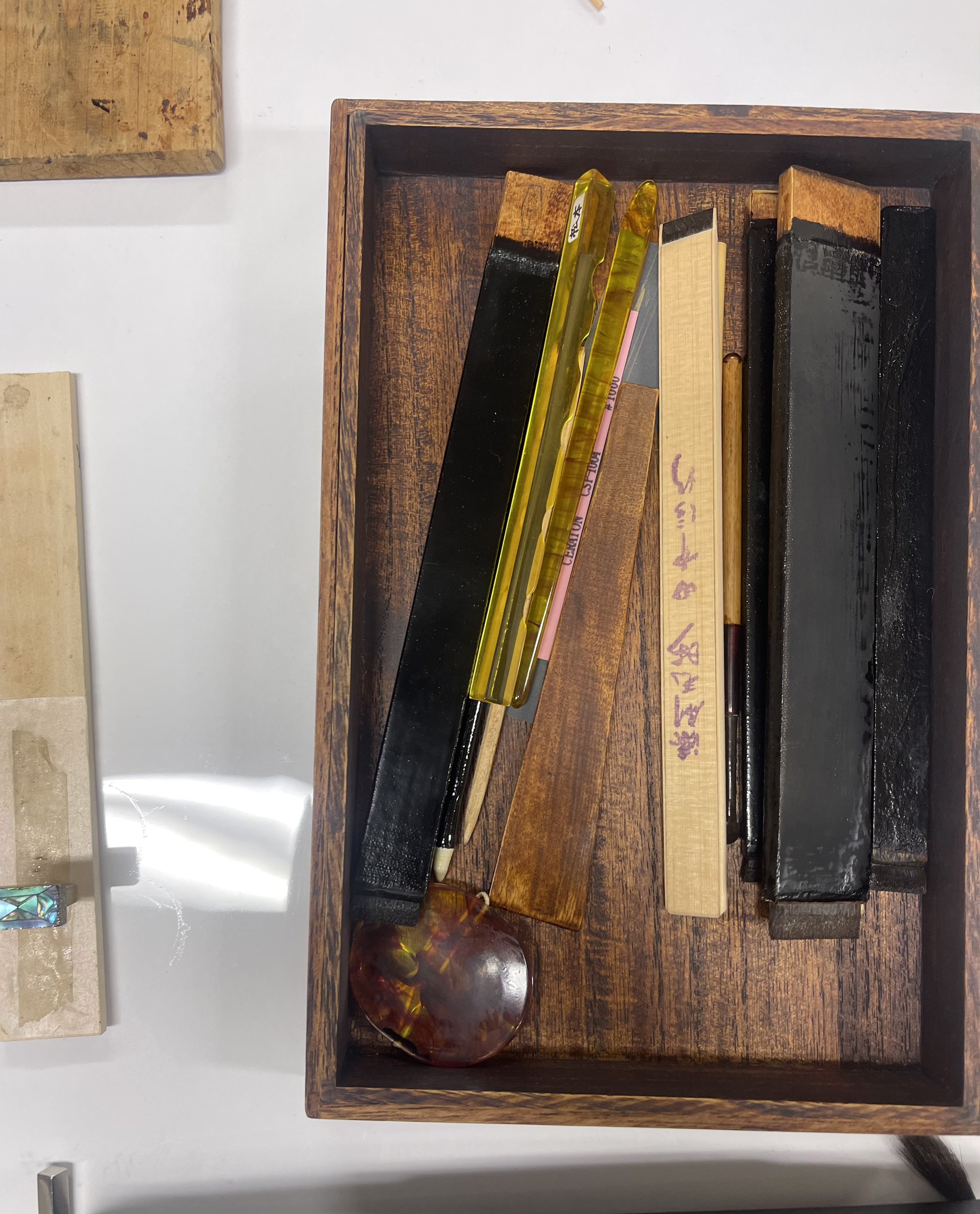 Urushi Tools
Urushi Tools
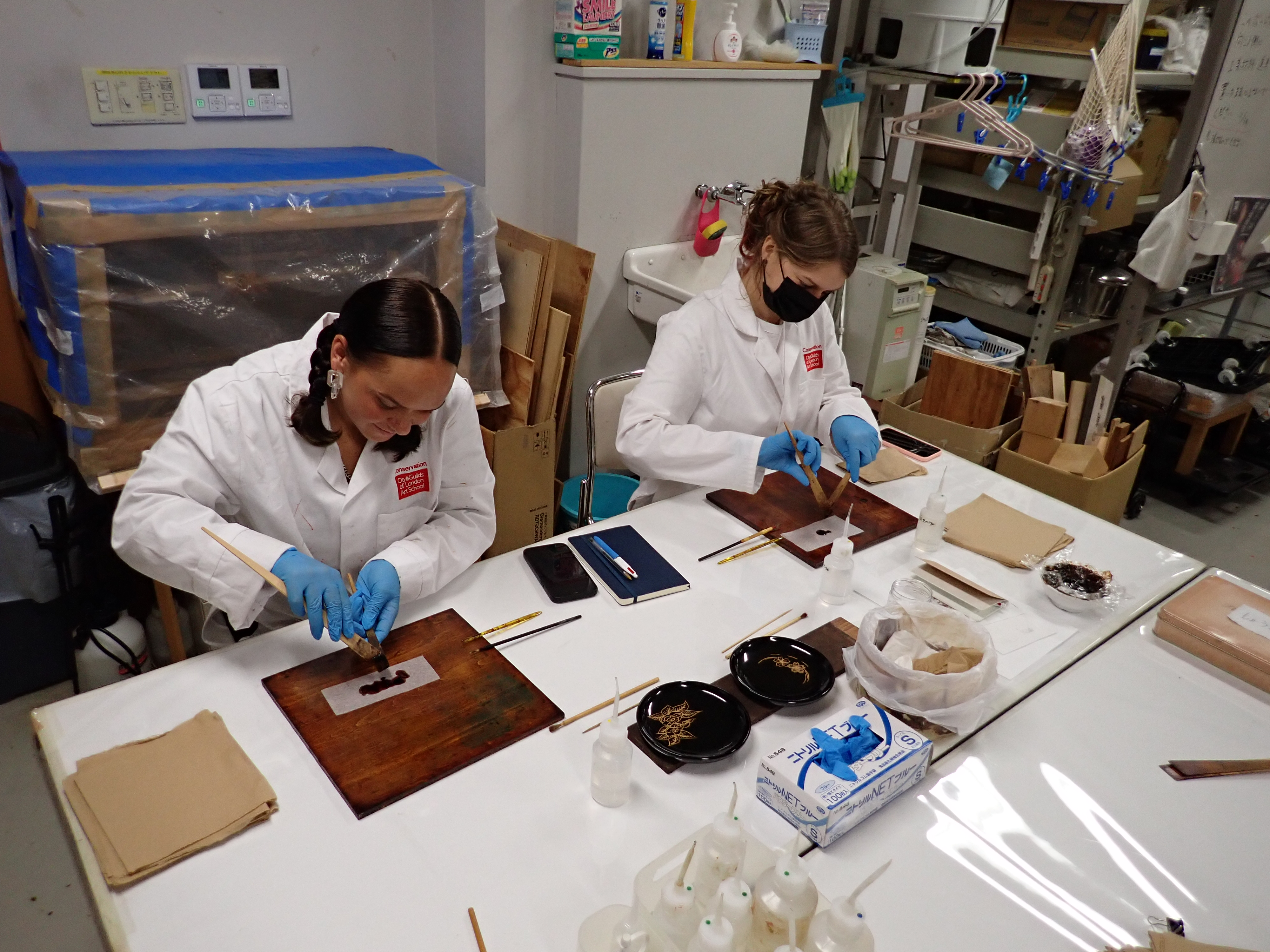 Ally and Savannah working in the urushi studio
Ally and Savannah working in the urushi studio
During the internship they each produced maki-e designs on a black urushi plate and a mother of pearl decorative pendant. This taught them an insight into the intense and lengthy processes involved in producing even small, simple objects using urushi. Which in turn, developed a deep appreciation of the craft.
Here, they reflect on and describe the processes used to create the maki-e designs on the black urushi plates;
“We chose from traditional Japanese maki-e design books and sketched out our designs. This was transferred onto the black urushi plates using red urushi, so that the design was distinguishable. The lacquer was covered in a very fine gold powder to illuminate the design which was then cured in a bespoke cabinet which provided the necessary 75% relative humidity and 25oC.
The following day the design was repeated in red urushi with a thicker line and very fine pure gold powder was sprinkled over the top ensuring all areas of red were saturated with gold. The thickness of the lacquer made this a challenging process – having this experience of using the material prior to museum visits left us both in awe of what can be produced using the same materials we were.
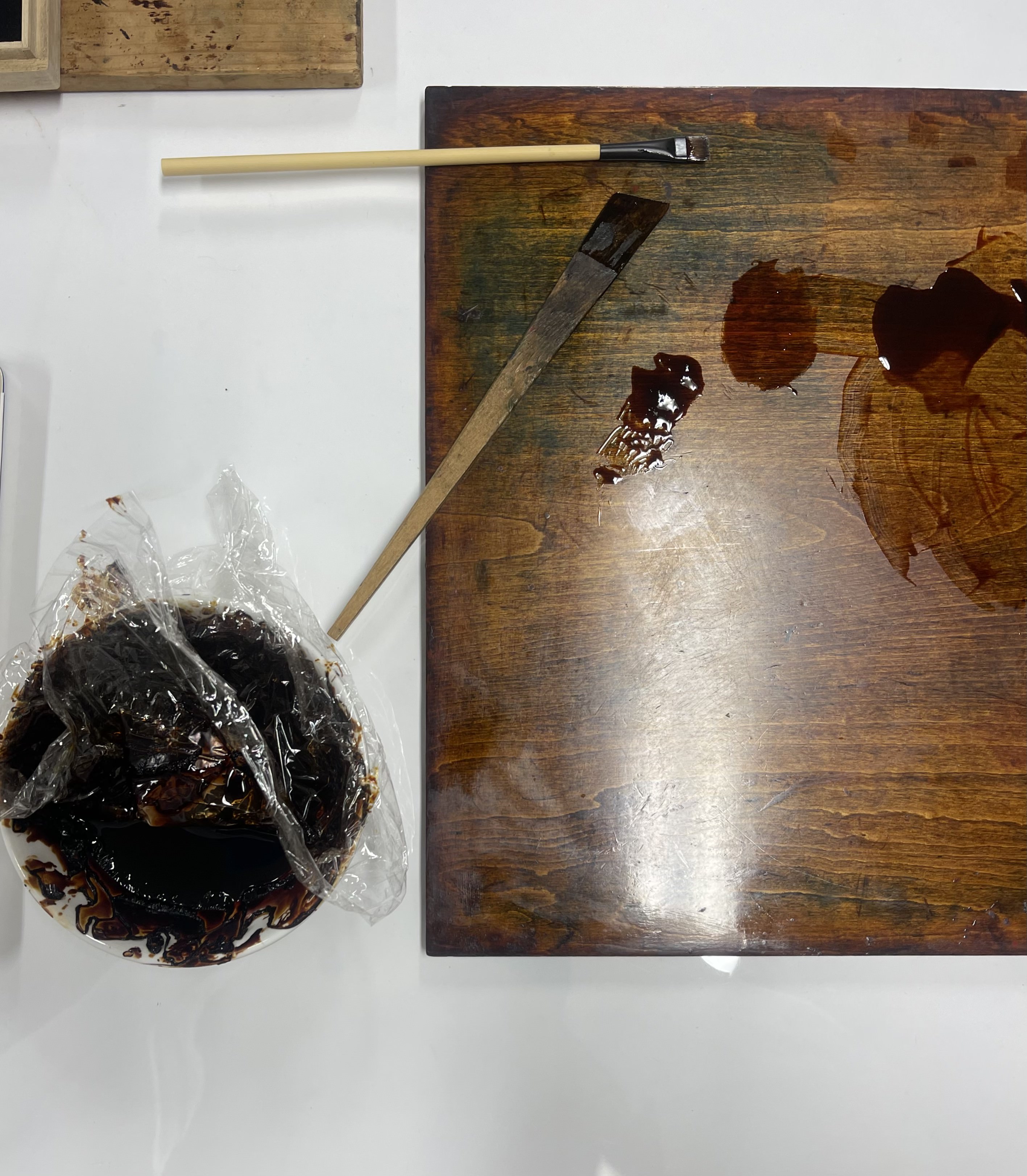 Transparent urushi and tools
Transparent urushi and tools
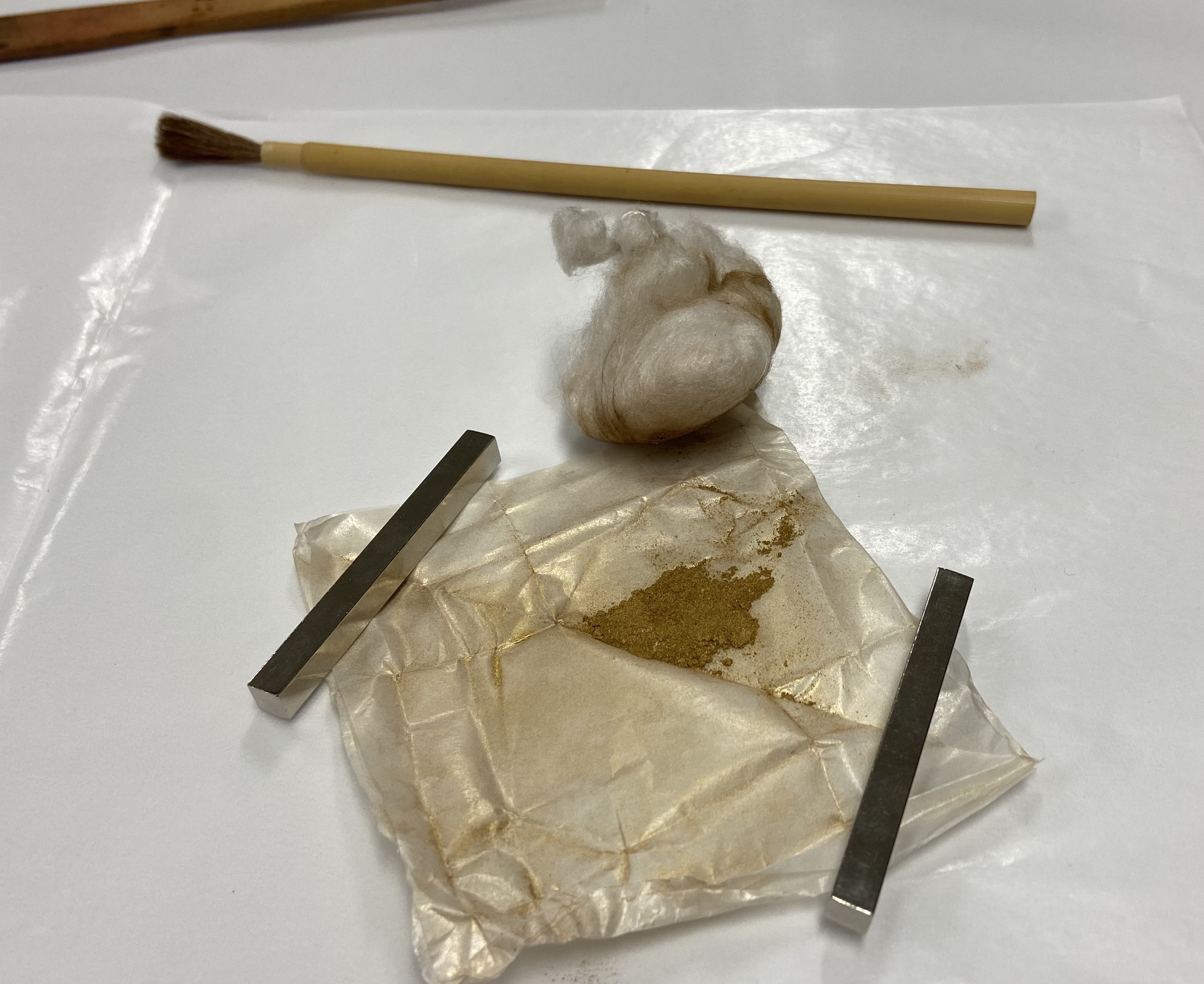 Pure gold powder and tools
Pure gold powder and tools
Once cured, the now gold design was covered with a thin layer of transparent urushi mixed with oil and Kamphor to reduce the viscosity and blotted with tissue paper to ensure any excess was removed, and then cured again. This was subsequently polished using very fine abrasives and burnished using a specialist tool – made from a seabream tooth, creating a vibrant gold surface.”
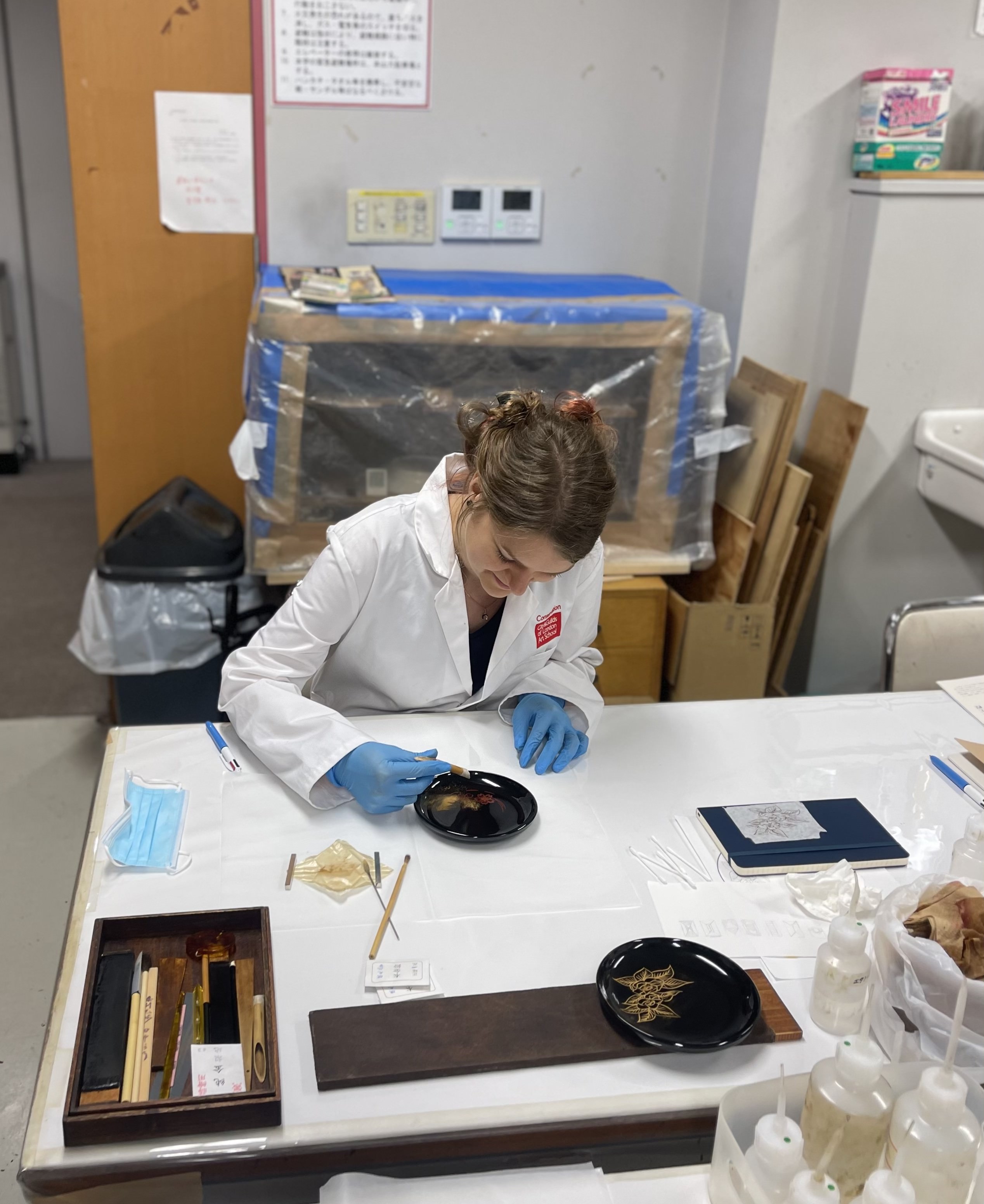 Ally working in the urushi studio
Ally working in the urushi studio
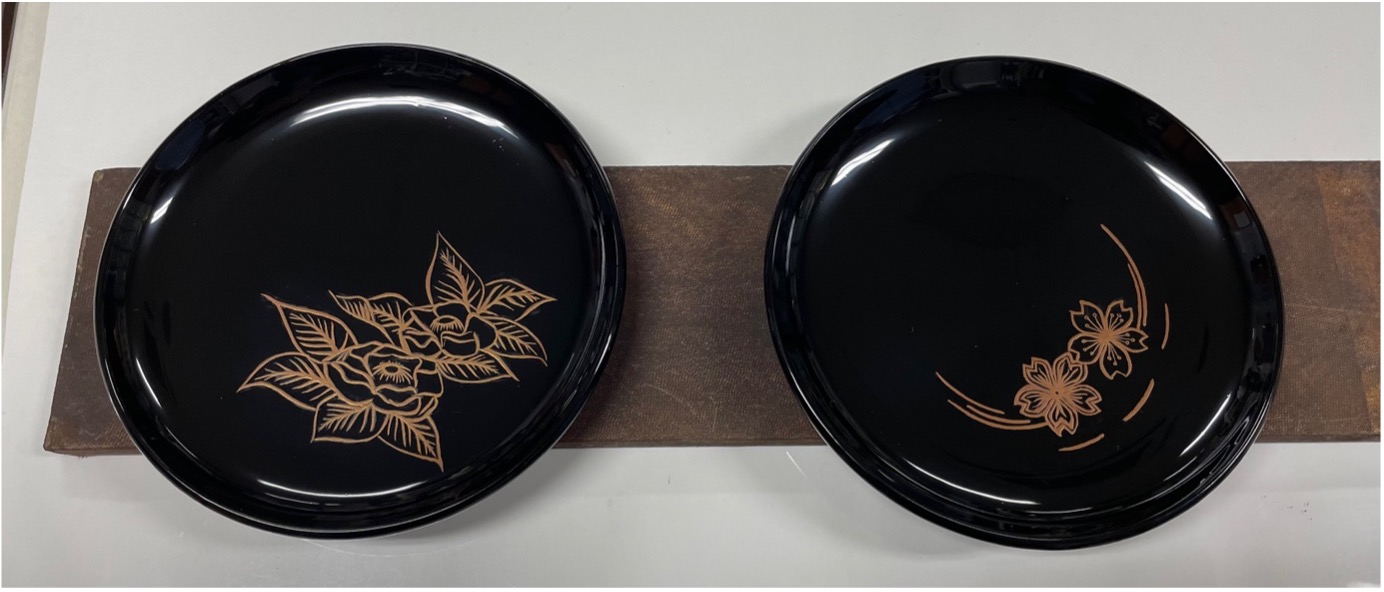 Ally (right) and Savannah’s (left) finished urushi maki-e plates
Ally (right) and Savannah’s (left) finished urushi maki-e plates
For their mother of pearl pendants, the base had been prepared by Takumi using black urushi. The mother of pearl was soaked in water to create a less brittle material. The pieces were cut using a scalpel and placed onto the surface of the pendant on top of a layer of transparent urushi, which was then cured. The top of this was covered with another layer of transparent urushi and after curing again, this was polished using abrasives to reveal the mother of pearl designs.
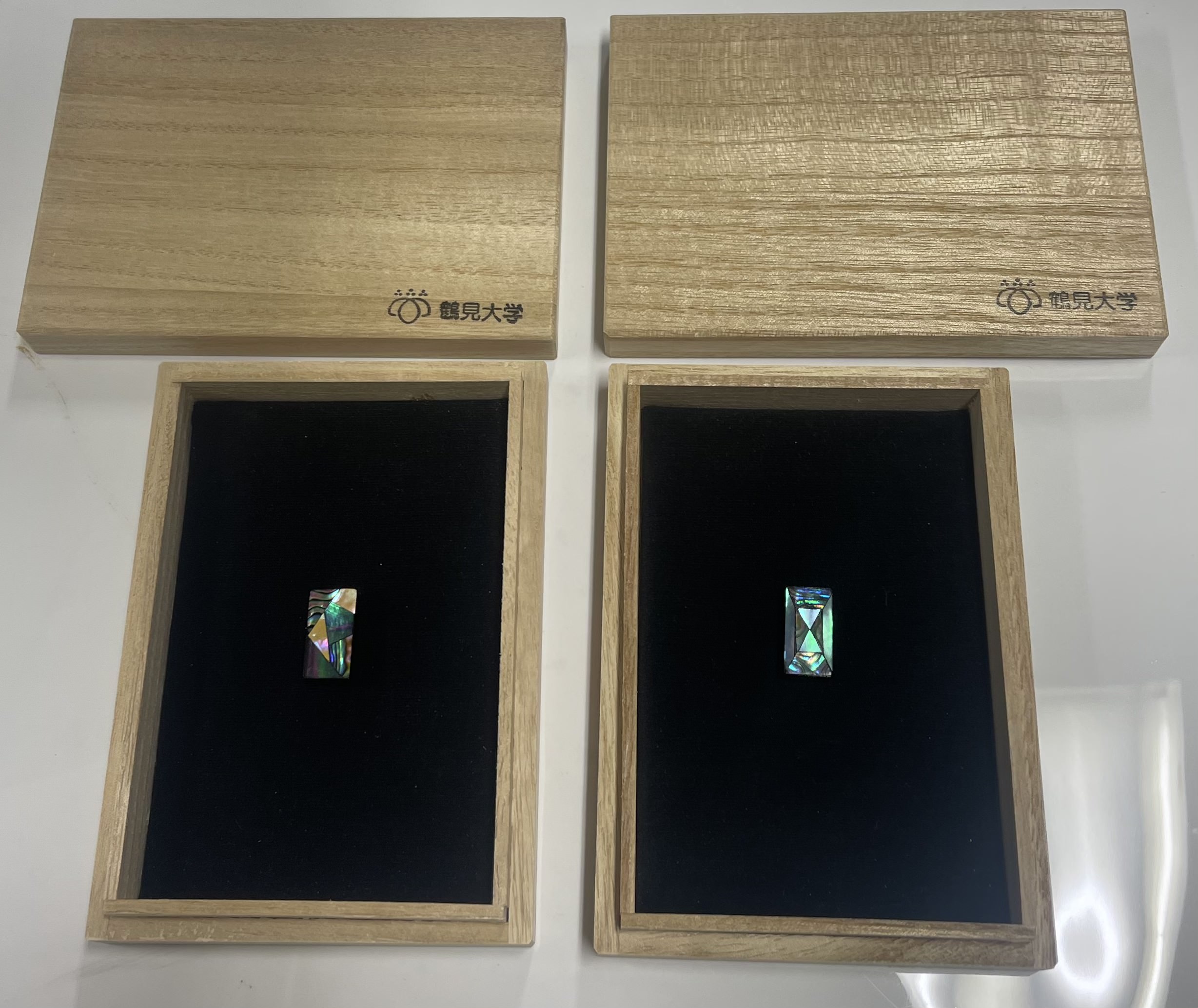 Ally (left) and Savannah’s (right) mother of pearl pendants
Ally (left) and Savannah’s (right) mother of pearl pendants
“The internship was completely inspiring. The excitement of learning such a treasured craft quickly led us to local specialist urushi craft shops in the hopes to have what we need to continue to practise these skills after returning to London. We both hope to one day come across such objects in our careers and put these wonderful skills and traditions into practice. We would like to say a huge thank the students and professors at Tsurumi university, they gave us an incredible experience made us feel so welcome in the process.”
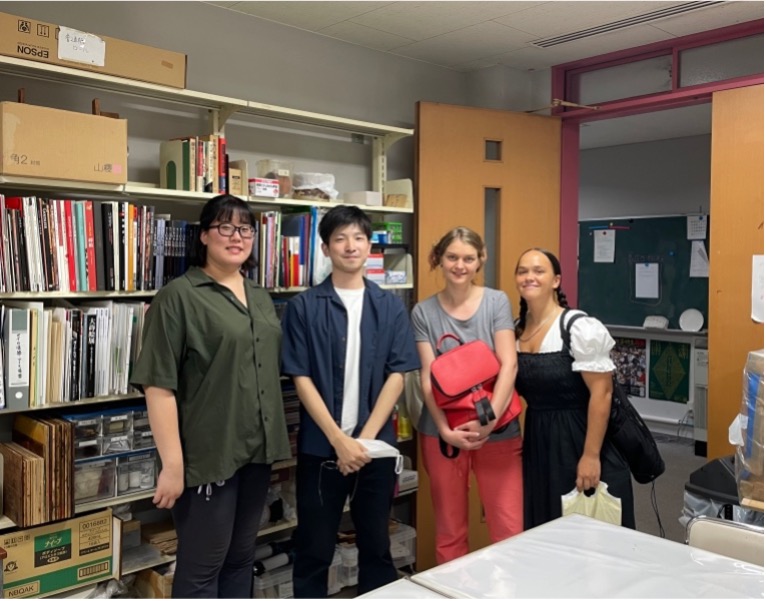 In the urushi studio at Tsurumi university
In the urushi studio at Tsurumi university
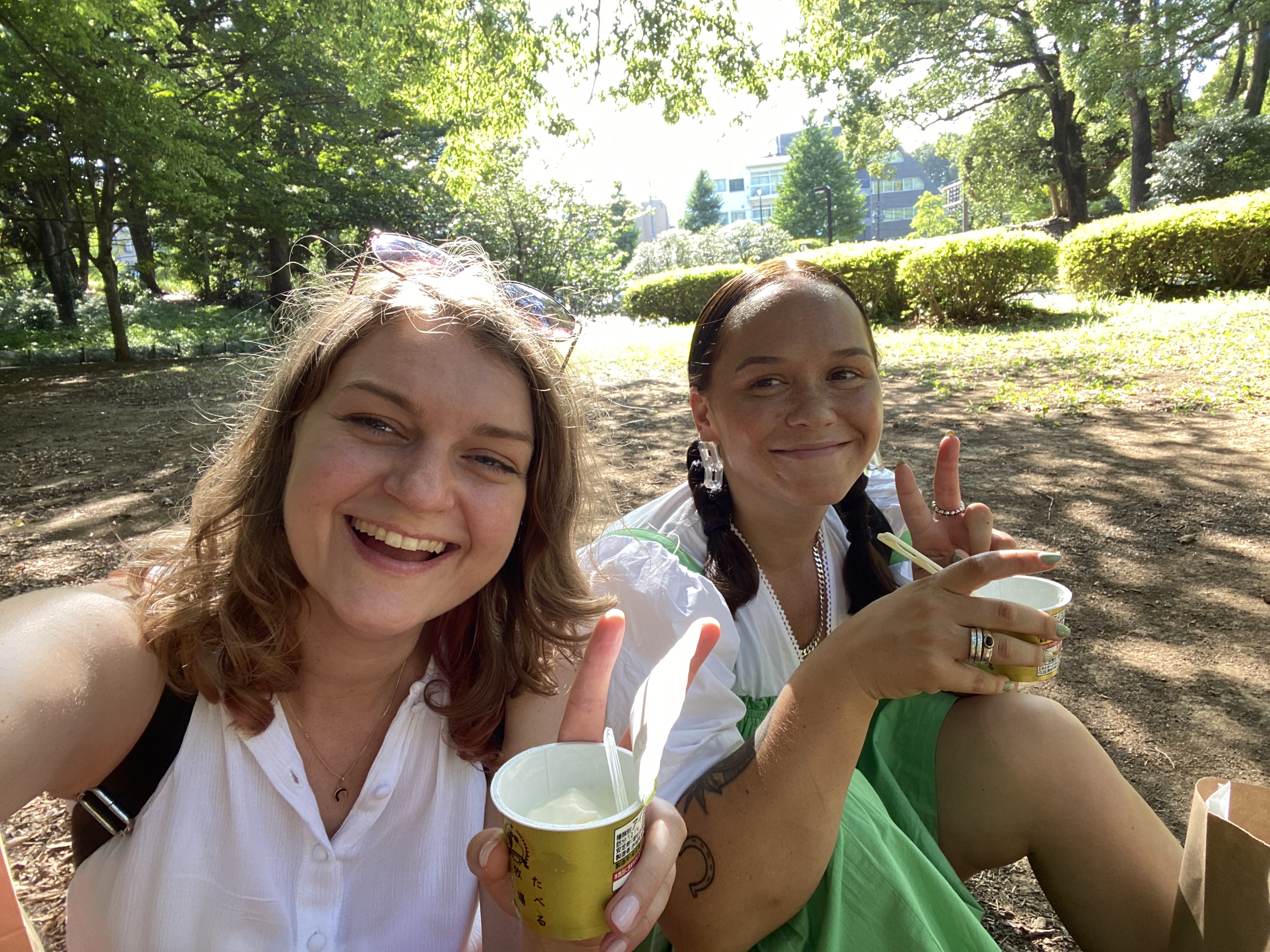 Ice-cream in the park!
Ice-cream in the park!
Images and words by Ally Wingate-Saul and Savannah Grieve


